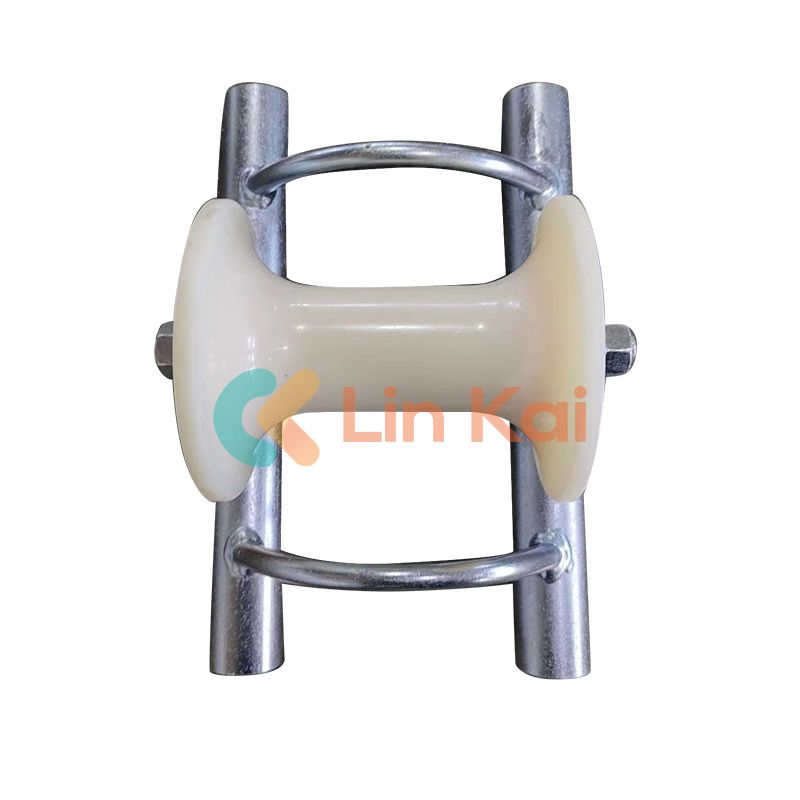
- English
- Español
- Português
- русский
- Français
- 日本語
- Deutsch
- tiếng Việt
- Italiano
- Nederlands
- ภาษาไทย
- Polski
- 한국어
- Svenska
- magyar
- Malay
- বাংলা ভাষার
- Dansk
- Suomi
- हिन्दी
- Pilipino
- Türkçe
- Gaeilge
- العربية
- Indonesia
- Norsk
- تمل
- český
- ελληνικά
- український
- Javanese
- فارسی
- தமிழ்
- తెలుగు
- नेपाली
- Burmese
- български
- ລາວ
- Latine
- Қазақша
- Euskal
- Azərbaycan
- Slovenský jazyk
- Македонски
- Lietuvos
- Eesti Keel
- Română
- Slovenski
- मराठी
- Srpski језик
What are the benefits of using cable pulling rollers?
2024-10-03

What are the benefits of using cable pulling rollers?
1. Minimizes cable damage
Cable damage can lead to high repair and replacement costs, not to mention project delays. Cable pulling rollers prevent damage to cables, making sure they are not stretched, pinched, or torn during the installation process.2. Reduces labor costs
Using cable pulling rollers can significantly reduce labor costs. Since the equipment is designed to pull cables without much effort, manual labor in the installation process is minimized.3. Increases productivity
Cable pulling rollers are designed to increase the efficiency of the installation process. They are easy to use and require minimal effort, reducing the time and effort required to pull cables.4. Improves safety
Using cable pulling rollers eliminates the need for manual pulling of cables, reducing the risk of injury to workers. It also eliminates the need for workers to be in tight, dangerous spaces, thereby improving their overall safety.Where can cable pulling rollers be used?
1. Construction sites
Cable pulling rollers are widely used in construction sites for installing power and communication cables in buildings. They make cable installation much easier and faster.2. Tunnels and underground installations
When installing cables in tunnels and underground installations, cable pulling rollers come in handy. They minimize friction and prevent cable damage during installation.3. Open spaces
Cable pulling rollers can be used to install cables across open spaces. With the use of cable pulling rollers, the installation process becomes easy and convenient.Can cable pulling rollers be customized?
Yes. Cable pulling rollers can be customized to suit specific cable installation needs. Different rollers can be modified to accommodate different cable sizes and shapes. Special rollers can also be designed for use in special installation locations such as tight spaces or vertical conduits. In conclusion, cable pulling rollers are essential tools in cable installation processes. They significantly reduce labor costs, increase productivity, and improve safety. They are versatile, easy to use, and can be customized to suit specific installation needs. Contact Ningbo Lingkai Electric Power Equipment Co., Ltd. at nbtransmission@163.com and visit their website at https://www.lkstringingequipments.com to learn more about their cable pulling rollers and their applications.
Science Research Papers (example):
Baker, S., & Johnson, R. (2019). "The impact of cable pulling equipment on installation costs" Journal of Electrical Engineering, 12 (3).
Smith, J., & Johnson, R. (2018). "A comparative study of cable pulling methods" Engineering Letters, 9 (2), 12-19.
Thompson, P. (2017). "Cable pulling roller design for ducts and conduits." National Science Journal, 4, 31-37.
Wilson, R. (2016). "Evaluating the effectiveness of cable pulling rollers in preventing cable damage" Electrical Technology Review, 8, 12-17.
Hill, A., & Williams, K. (2015). "Cable pulling techniques for submarine cable installation" International Journal of Ocean Engineering, 11 (4), 58-65.
Taylor, S., & Anderson, M. (2014). "A review of cable pulling equipment and their applications" Journal of Electrical Science, 5 (2), 40-48.
Clark, T., & Johnson, R. (2013). "Design and construction of cable pulling equipment for underground installations" Construction Engineering Journal, 7, 47-52.
Morris, J., & Wilson, S. (2012). "Cable pulling challenges in building construction" Journal of Building Engineering, 2, 27-34.
Wright, R., & Anderson, M. (2011). "Cable pulling in confined spaces" Ergonomic Technology Reviews, 4, 23-30.
Hernandez, J., & Johnson, R. (2010). "The effects of cable damage during installation" International Journal of Electrical Engineering Education, 9 (2), 45-52.



